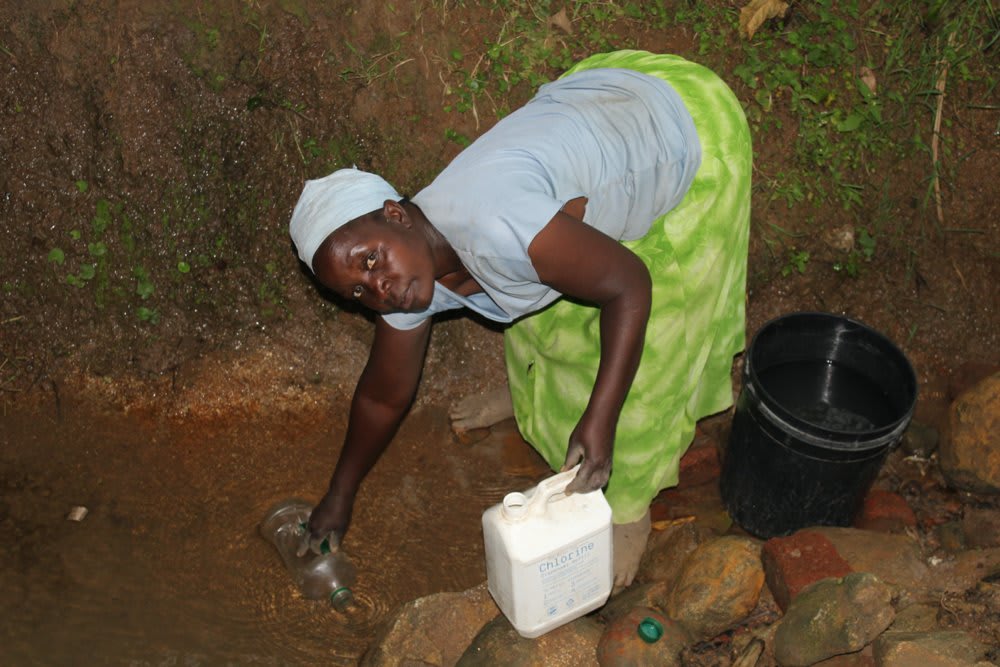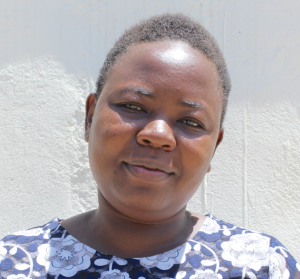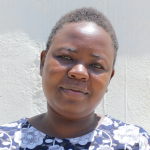"Since the spring is open to all sources of contamination, our parents spend more money on medication than paying school fees for us, and this has affected most of us in the community academically," said secondary school student Collins, a teenager in Shibikhwa who depends on Musotsi Spring for water.
Musotsi Spring serves 210 people in Shibikhwa, but it is not serving them well. The spring is completely open to contamination from surface runoff which carries with it soil, farm chemicals, and animal waste, among other toxins. The cost on community members' health and wallets is high as they are frequently battling and treating waterborne diseases. They lose a lot of productive time when they are sick, either at work among adults or at school for children.
The other big challenge at Musotsi Spring is poor accessibility. Did you notice how dark it is in the photos of community members fetching water? That is because when we first arrived to interview them, it was too early to accompany them to the spring. During the day, the crowding and lines seem unending as people have to scoop water with shallow jugs and bowls to pour into their larger jerrycans.
The more people who fetch water at once, the more mud gets stirred up into the water. Then, people have to wait even longer for the water to settle before trying to fetch it again. The whole fetching process is incredibly slow and frustrating. This time lost at the spring compounds with time lost to being sick from the spring water, reducing community members' productivity even further.
So, our hosts invited us to stay until they were ready to go to the spring. Once the sun set and the evening was settling in, we accompanied them to Musotsi Spring.

"I am forced to draw water from this unprotected spring very early in the morning or later in the evening; that is the time when the water is somewhat clean. During the day there is queueing at the spring and precious time is wasted in gossip, which also results in conflicts," said Esther Valavie, a 22-year-old farmer in the community.
Even though some of the best water is found in these pre-dawn and dusk hours, those are also the most dangerous times to send children, especially girls, alone to the spring. So, adults have to leave their other work behind to accompany their children, or they must settle for the dirtier, mid-day water that takes longer to fetch. The choice is hardly a fair one.
What We Can Do:
Spring Protection
Protecting the spring will help provide access to cleaner and safer water and reduce the time people have to spend to fetch it. Construction will keep surface runoff and other contaminants out of the water. With the community’s high involvement in the process, there should be a good sense of responsibility and ownership for the new clean water source.
Fetching water is a task predominantly carried out by women and young girls. Protecting the spring and offering training and support will, therefore, help empower the female members of the community by freeing up more of their time and energy to engage and invest in income-generating activities and their education.
Training on Health, Hygiene, COVID-19, and More
To hold trainings during the pandemic, we work closely with both community leaders and the local government to approve small groups to attend training. We ask community leaders to invite a select yet representative group of people to attend training who will then act as ambassadors to the rest of the community to share what they learn. We also communicate our expectations of physical distancing and wearing masks for all who choose to attend.
The training will focus on improved hygiene, health, and sanitation habits in this community. We will also have a dedicated session on COVID-19 symptoms, transmission routes, and prevention best practices.
With the community’s input, we will identify key leverage points where they can alter their practices at the personal, household, and community levels to affect change. This training will help to ensure participants have the knowledge they need about healthy practices and their importance to make the most of their water point as soon as water is flowing.
Our team of facilitators will use a variety of methods to train community members. Some of these methods include participatory hygiene and sanitation transformation, asset-based community development, group discussions, handouts, and demonstrations at the spring.
One of the most important issues we plan to cover is the handling, storage, and treatment of water. Having a clean water source will be extremely helpful, but it is useless if water gets contaminated by the time it is consumed. We and the community strongly believe that all of these components will work together to improve living standards here, which will help to unlock the potential for these community members to live better, healthier lives.
We will then conduct a small series of follow-up trainings before transitioning to our regularly scheduled support visits throughout the year.
Training will result in the formation of a water user committee, elected by their peers, that will oversee the operations and maintenance of the spring. The committee will enforce proper behavior around the spring and delegate tasks that will help preserve the site, such as building a fence and digging proper drainage channels. The fence will keep out destructive animals and unwanted waste, and the drainage will keep the area’s mosquito population at a minimum.

 Protected Spring
Protected Spring
 Rehabilitation Project
Rehabilitation Project






































